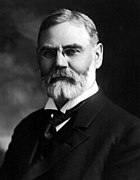| ||||||||||||||||||||||||||||||||||||||||||||||||||||||||||||||||||||
All 391 seats in the United States House of Representatives[b] 196 seats needed for a majority | ||||||||||||||||||||||||||||||||||||||||||||||||||||||||||||||||||||
|---|---|---|---|---|---|---|---|---|---|---|---|---|---|---|---|---|---|---|---|---|---|---|---|---|---|---|---|---|---|---|---|---|---|---|---|---|---|---|---|---|---|---|---|---|---|---|---|---|---|---|---|---|---|---|---|---|---|---|---|---|---|---|---|---|---|---|---|---|
| ||||||||||||||||||||||||||||||||||||||||||||||||||||||||||||||||||||
| ||||||||||||||||||||||||||||||||||||||||||||||||||||||||||||||||||||
The 1910 United States House of Representatives elections were held for the most part on November 8, 1910, while Maine and Vermont held theirs early in September, in the middle of President William Howard Taft's term. Elections were held for all 391 seats of the United States House of Representatives, representing 46 states, to the 62nd United States Congress.
The conservative Taft contended with major factional splits within his Republican Party. Instead of using his position as president to bridge compromise, Taft alienated the progressive wing of the party, which had championed his predecessor, Theodore Roosevelt. While conservatives controlled the largest number of elected positions for Republicans, progressive politics had been what brought many voters to the polls. The clash of these units of the Republican Party, combined with the message of unity from the Democratic Party, was enough to allow the Democrats to take control of the House, ending 16 years in opposition. This was the first time that the Socialist Party won a seat.
Cite error: There are <ref group=lower-alpha> tags or {{efn}} templates on this page, but the references will not show without a {{reflist|group=lower-alpha}} template or {{notelist}} template (see the help page).


